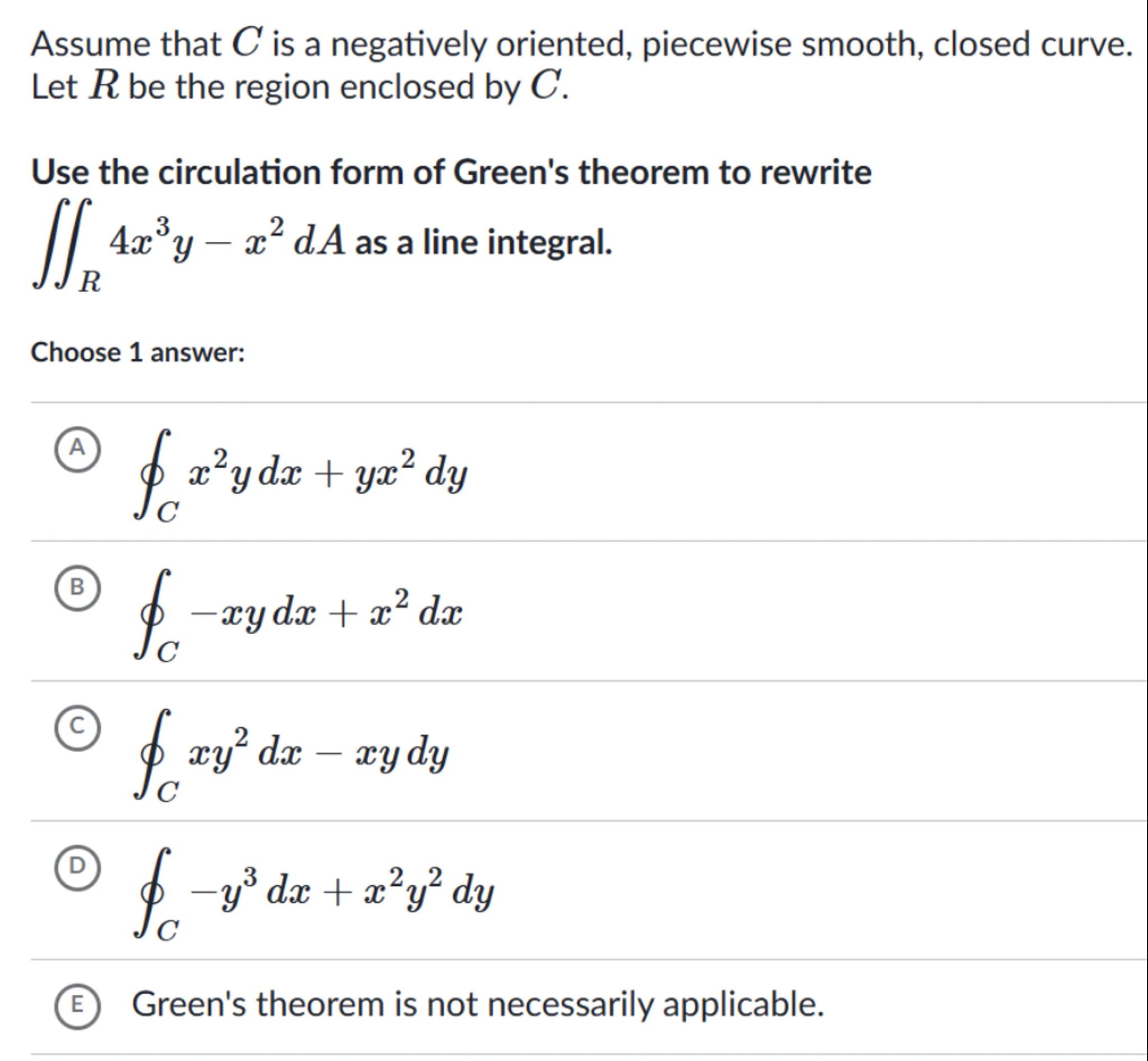
Sia

Question
Math
Posted over 1 year ago
Assume that is a negatively oriented, piecewise smooth, closed curve. Let be the region enclosed by .
Use the circulation form of Green's theorem to rewrite as a line integral.
Choose 1 answer:
(A)
(B)
(C)
(D)
(E) Green's theorem is not necessarily applicable.

Answer from Sia
Posted over 1 year ago
Solution by Steps
step 2
The given double integral is . To use Green's theorem, we identify and such that
step 3
Let's assume and , where and are functions to be determined
step 4
Since and , we need
step 5
Comparing the terms, we see that and . Integrating, we get and , where and are constants of integration
step 6
Since the constants of integration do not affect the derivatives, we can choose and . Thus, and
step 7
Applying Green's theorem, the line integral becomes
step 8
Simplifying the line integral, we get . Since is negatively oriented, we need to reverse the sign, resulting in
step 9
The correct line integral expression that corresponds to the given double integral using Green's theorem is . None of the answer choices match this expression exactly, but choice (B) is the closest if we consider a missing factor of in the term
1 Answer
B
Key Concept
Green's theorem in circulation form
Explanation
Green's theorem relates a double integral over a region to a line integral around the boundary of the region. It requires identifying the correct functions and such that their partial derivatives correspond to the given double integral's integrand.
Not the question you are looking for? Ask here!
Enter question by text
Enter question by image
Unlock Smarter Learning with AskSia Super!
Join Super, our all-in-one AI solution that can greatly improve your learning efficiency.
30% higher accuracy than GPT-4o
Entire learning journey support
The most student-friendly features
Study Other Question